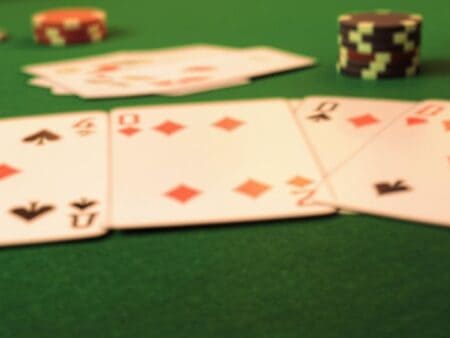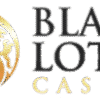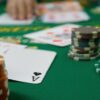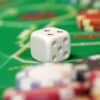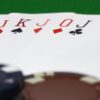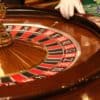Blackjack is a game that many people enjoy, and it’s easy to see why. It’s got a good mix of luck and skill. But if you’re just playing based on what feels right, you might be leaving money on the table. Learning how to use basic strategy in blackjack can really change your game. It’s not about counting cards or anything super complicated; it’s just about making the smartest move in every situation. This guide will break down the basics so you can play smarter and have more fun.
Key Takeaways
- Basic strategy in blackjack tells you the mathematically best move for every hand you can get, based on your cards and the dealer’s visible card.
- Following basic strategy helps lower the house edge, meaning you lose less money over time compared to playing on instinct alone.
- Key decisions involve knowing when to hit, stand, double down, or split pairs based on your hand total and the dealer’s upcard.
- Avoid side bets like insurance, as they usually have a high house edge and aren’t part of basic strategy.
- Practice is important; use online simulators or play at low-stakes tables to get comfortable with the strategy before betting big.
Understanding Blackjack Basic Strategy
The Core Principles of Basic Strategy
Alright, let’s talk about basic strategy in blackjack. It’s not some secret code or a way to count cards, nope. It’s simply a set of mathematically derived decisions for every possible hand you can get versus every possible card the dealer shows. Think of it as the best possible move, based purely on probability. The goal is to minimize the house edge, meaning you lose less money over time. It’s like having a map for the casino floor; you still have to walk, but you know the best path. You’ll see charts, and they’re not just for show. They tell you when to hit, stand, double down, or split. It’s all about making the statistically sound choice, every single time. It’s not about gut feelings; it’s about math, plain and simple.
Why Basic Strategy Matters
So, why bother with all this? Well, without basic strategy, you’re basically playing blind. You might get lucky sometimes, sure, but over the long haul, you’re giving the casino a much bigger advantage. Imagine playing a video game without knowing the controls; you’d probably get frustrated pretty fast. Basic strategy is like learning those controls. It helps you play smarter, not harder. It’s the difference between a casual player and someone who actually knows what they’re doing. It’s the foundation for any serious blackjack player. You can find some great resources online to help you get started, like mobile slots.
Minimizing the House Edge
The house edge is that built-in advantage the casino has. It’s why they stay in business. Blackjack, when played with basic strategy, has one of the lowest house edges of any casino game. We’re talking about a tiny percentage, maybe around 0.5% if you’re playing perfectly. Compare that to other games where the edge can be 5% or even higher. That small difference means a lot more of your money stays at the table, rather than going straight to the casino’s pocket. It’s not about guaranteeing a win every hand, that’s impossible. It’s about playing in a way that gives you the best possible odds, reducing those losses and maybe, just maybe, letting you walk away with some winnings. It’s a marathon, not a sprint, and basic strategy is your training plan.
Decoding the Strategy Charts
Alright, so you’ve got your chips, you’ve got your seat, and you’re ready to play some blackjack. But before you start slapping down bets willy-nilly, you gotta understand these strategy charts. They look like a secret code, I know, but trust me, they’re your best friend at the table. Think of them as a map to winning more often. They’re built on tons of computer simulations, figuring out the best move for every single hand you could have against every single card the dealer shows. It’s all about minimizing the house’s advantage, you know? Like, if you have a 16 and the dealer’s showing a 10, the chart will tell you to hit. Sounds crazy, right? But statistically, it’s the move that loses you the least money over time. It’s not about getting rich quick, it’s about playing smart. You can find these charts all over the place online, and some casinos even let you use them at the table, though other players might give you the stink eye. Just pick one chart that matches the rules of the game you’re playing – like whether the dealer hits or stands on a soft 17 – and stick with it. Trying to learn every single variation will just make your head spin. Remember, these charts are based on millions of hands played out by computers. They’re not guesswork. They tell you exactly what to do: hit, stand, double down, or split. It’s a beautiful thing, really. Following these charts is the fastest way to get good at blackjack.
Navigating Hard Totals
Hard totals are your bread and butter. These are hands where you don’t have an Ace, or if you do, it has to count as a 1 because counting it as 11 would bust you. So, a 10 and a 6 is a hard 16. A King and a 7 is a hard 17. The charts break down what to do with these based on the dealer’s upcard. For example, with a hard 12, you’ll stand if the dealer shows a 4, 5, or 6. But if they show anything else, you hit. It’s all about probabilities. You don’t want to bust, but you also don’t want to get stuck with a weak hand.
Understanding Soft Totals
Soft totals are where things get a little more interesting, thanks to the Ace. An Ace can be 1 or 11, which gives you flexibility. A hand like Ace-6 is a soft 17. If you hit and get a 5, you now have Ace-6-5, which is a soft 22, but you can just count the Ace as a 1, making it a hard 12. This flexibility means you can be more aggressive with soft hands. The charts will show you when to hit, stand, or even double down on these hands. For instance, a soft 18 (Ace-7) is a tricky hand. Against a dealer’s 9, 10, or Ace, you might want to hit, even though it’s a decent total. It’s counterintuitive, but the math backs it up.
Mastering the Splits
Splitting pairs is a game changer. When you get a pair, like two 8s, the chart tells you whether to split them. Always split Aces and 8s, no matter what the dealer has. Two Aces give you two chances to get 21. Two 8s, when split, give you two 8s, which are much better than a hard 16. But don’t split 5s or 10s. Splitting 5s is usually a bad idea because 10 is a great starting hand for doubling down. And splitting 10s? You already have 20, which is a monster hand. Why break it up? The charts will guide you on the other pairs, like 2s, 3s, 4s, 6s, 7s, and 9s, telling you when to split based on the dealer’s card. It’s all about turning a potentially mediocre hand into two strong ones, or avoiding a bad hand altogether. You can find some great resources on how to play blackjack if you want to get more into the details.
Key Decisions for Hard Hands
Alright, let’s talk about those hands that don’t have any aces, or if they do, the ace has to be a 1. These are your ‘hard hands,’ and they can be a bit trickier because you’re always one card away from busting. It’s like walking a tightrope, you know? You gotta be careful.
When to Stand on 12-16
This is where things get interesting. If you have a hard 12 through 16, and the dealer is showing a 2, 3, 4, 5, or 6, you should stand. Why? Because the dealer has a pretty good chance of busting with those low upcards. They have to keep hitting until they get to 17 or higher. If they draw a 10 or face card, they’re toast! It’s a calculated risk, but it pays off more often than not. Don’t get greedy here; just let the dealer do the work.
When to Hit on 12-16
Now, if the dealer is showing a 7, 8, 9, 10, or an Ace, you’ve got a different situation. With these dealer upcards, your 12-16 is probably not going to cut it. The dealer is in a much stronger position. You need to hit. It feels risky, I know, especially with a 16. You’re praying for a low card. But mathematically, hitting is the better play here. You’re trying to improve your hand before the dealer can make a strong one. It’s a tough call, but it’s the smart one.
Optimal Play for 17-21
Anything 17 or higher with a hard hand? Just stand. Seriously, don’t even think about hitting. You’ve got a strong hand, and trying to improve it is just asking for trouble. You’re way too close to busting. Let the dealer worry about their hand. Your job is done. Just sit back and hope they bust or end up with less than you. It’s that simple. Don’t overthink it.
Strategic Play with Soft Hands
Soft hands in blackjack are a bit different, and honestly, they can be a little confusing at first. A soft hand is one that includes an Ace, which can be counted as either a 1 or an 11. This flexibility is what makes playing them so interesting, and also why you need a solid strategy. It’s not just about hitting or standing; sometimes you want to double down or even split pairs, and soft hands change the game. You really gotta pay attention here.
Hitting or Doubling Aces-6
When you have an Ace and a 6, that’s a soft 17. If the dealer shows a 7 or an 8, you should hit. Against a 9, 10, or Ace, you should also hit. It feels weird, I know, but trust me on this. The dealer’s strong upcards mean you need to improve your hand, and that Ace can save you from busting. It’s a calculated risk, but it’s the mathematically sound move. Don’t be scared to hit; it’s part of the strategy.
Strategic Moves for 13-18
Soft hands from 13 to 18 require careful consideration. For example, a soft 18 (Ace-7) is a tricky one. If the dealer shows a 2, 7, or 8, you should stand. But if the dealer shows a 3, 4, 5, or 6, you should double down. This is a prime opportunity to get more money on the table when you have a strong advantage. Against a 9, 10, or Ace, you hit. It’s all about reading the dealer’s card and knowing when to push your luck.
Standing on 19-21
Honestly, once you get to a soft 19, 20, or 21, you’re in a great spot. These are winning hands, or at least very strong hands. You should always stand on these totals. There’s no reason to risk busting when you’re already sitting pretty. The dealer has to play out their hand, and you’ve got the advantage. Just relax and let the game play out. It’s a good feeling, right?
The Art of Splitting Pairs
Splitting pairs is one of those blackjack moves that can really turn a losing hand into a winner, or at least a break-even situation. It’s not just about having two cards of the same rank; it’s about recognizing when those two cards can become two separate, strong hands. This is where basic strategy really shines, telling you exactly when to split and when to just play your hand as is. It’s a bit like having a superpower at the table, but you gotta know the rules.
Always Split Aces and Eights
This is probably the most famous blackjack rule, and for good reason. Two Aces give you a total of 12, which isn’t great. But if you split them, you get two chances to draw a 10-value card, giving you two shots at 21. That’s a fantastic outcome! Now, eights are a bit different. An eight and an eight give you a hard 16. This is a terrible hand, often leading to a bust if you hit. But if you split those eights, you get two hands that start with an eight. You can then hit these eights, aiming for a better total, and avoid that dreaded 16. It’s a game changer, seriously.
When Not to Split Fives and Tens
So, you’ve got two fives. That makes a total of 10. This is a great starting point for a double down, especially against weaker dealer upcards. Splitting fives would give you two hands starting with five, which isn’t nearly as strong as playing that 10. You’d be better off doubling down when the opportunity arises. And tens? Forget about splitting tens. You already have a 20, which is a very strong hand. Splitting tens would give you two hands of 10, and you’d have to hit them, likely ending up with totals like 17 or 18, which are much weaker than your original 20. Don’t do it. It’s a common mistake beginners make, and it costs them money.
Strategic Splits for Other Pairs
What about the other pairs? This is where the charts come in handy, but let’s break down some common ones. Pairs of 2s, 3s, and 7s are generally split against dealer upcards of 2 through 7. Why? Because the dealer showing a 2 through 7 is in a weaker position, more likely to bust. Splitting gives you two decent starting hands against a weak dealer. Pairs of 4s are a bit trickier; you only split them against a dealer’s 5 or 6. Otherwise, you hit. Sixes are split against dealer 2 through 6. It’s all about giving yourself the best chance to win based on what the dealer is showing. Remember, these aren’t just random guesses; they’re mathematically derived to minimize the house edge. You can find detailed charts online that show you exactly what to do for every pair against every dealer upcard. It’s worth checking out a good blackjack strategy chart to nail these down. It might seem like a lot to remember, but with practice, it becomes second nature. You’ll be splitting like a pro before you know it!
Leveraging Double Down Opportunities
Alright, let’s talk about doubling down. This is where you can really boost your winnings, but you gotta know when to do it. It’s like a power-up in the game, but use it wrong and you’re just giving the house more money. So, pay attention.
Doubling Down on 11
Got an 11? That’s a sweet spot. If the dealer is showing a 2 through a 10, you should seriously consider doubling your bet. Why? Because your next card could be a 10-value card (that’s any face card or a 10), giving you a perfect 21. It’s a high-probability situation, and you want to capitalize on it. Don’t be shy here; this is a prime opportunity.
Maximizing Double Downs on 10
Similar to 11, a total of 10 is also a great starting point for a double down. If the dealer’s upcard is anything from a 2 to a 9, you’ve got a good chance of getting a 10-value card to make 20. It’s a strong hand, and doubling down here puts you in a great position to win big. Just remember, if the dealer shows a 10 or an Ace, it’s usually better to just hit instead of doubling. Those dealer cards are too strong.
When to Double Down on Soft Hands
Soft hands, those with an Ace that can be a 1 or 11, offer some flexibility. If you have an Ace and a 6 (making a soft 17), and the dealer shows a 2 through 6, doubling down can be a smart move. The dealer is in a weaker position, and you have a good chance to improve your hand without busting. It feels a bit risky, but the math often supports it. Always check your basic strategy chart for the exact play, because sometimes hitting is better, depending on the dealer’s card.
Avoiding Costly Mistakes
Listen, nobody likes losing money, especially not unnecessarily. Blackjack, while a game of chance, also has a lot of strategy involved. Making a few common blunders can really eat into your bankroll and frankly, it’s just not fun. Let’s talk about some of the biggest traps players fall into and how you can sidestep them.
The Pitfalls of Insurance Bets
So, the dealer shows an Ace. They offer you
Putting Basic Strategy into Practice
So, you’ve spent hours poring over those charts, memorizing the ins and outs of basic strategy. That’s awesome! But now what? It’s time to actually do it. Putting theory into practice is where the real magic happens, or, you know, where you realize you still need a bit more work. Don’t sweat it, though. Everyone starts somewhere, and the casino floor can feel a little intimidating at first. Just remember why you’re doing this: to play smarter, not harder.
Practicing with Online Simulators
Before you even think about hitting a real casino, get friendly with online blackjack simulators. These are your training grounds. They’re great because you can play thousands of hands without risking a dime. Seriously, it’s like a free pass to make all the mistakes you want. You can find simulators that let you practice specific scenarios or just run through a continuous game. The goal here is to get to a point where playing basic strategy feels almost automatic. You want to be able to glance at your hand and the dealer’s upcard and just know the right move. It’s about building muscle memory for your brain. If you’re missing a play every 200 hands or so in a simulator, you’re doing pretty well. That’s the kind of accuracy you want to aim for before you step up to a real table.
Applying Strategy at Low-Stakes Tables
Okay, you’re feeling confident. Time to visit a real casino. Start small. Find tables with the lowest minimum bets you can. This isn’t about winning big; it’s about getting comfortable with the live environment. The pace is different, there are other players, and the dealer is a real person. You might still want to print out a basic strategy chart (check if the casino allows it first, some do, some don’t) and keep it discreetly nearby. Don’t be afraid to use it. Nobody’s going to judge you for playing correctly. In fact, other players might even appreciate it if you’re not slowing down the game with indecision. Just focus on making the correct play for each hand based on the chart and your hand total.
Observing Dealer Upcards
This might sound obvious, but really pay attention to what the dealer is showing. That upcard is your primary piece of information for making decisions. Is it a 2? A 7? An Ace? Each one tells a different story about the dealer’s potential hand and influences your best course of action. For example, if the dealer shows a 7, you’re generally more likely to hit on hands where you might stand if they showed a 2. It’s all about probabilities, and the dealer’s upcard is the biggest factor in those calculations. Keep your eyes peeled; it’s not just background noise, it’s vital intel for your strategy.
Refining Your Blackjack Approach
So, you’ve got the basics down, you know your hard totals from your soft ones, and you’re splitting pairs like a pro. That’s awesome! But mastering blackjack isn’t just about memorizing charts; it’s about making smart choices that keep you in the game longer and, you know, maybe even win a little. It’s a journey, really.
Bankroll Management Essentials
This is probably the least exciting part, but it’s super important. Think of your bankroll as your blackjack fuel. You wouldn’t drive on an empty tank, right? So, you need to figure out how much money you’re okay with losing before you even sit down. A good rule of thumb is to bet only 1-2% of your total bankroll on any single hand. This stops you from blowing through all your cash in a few bad rounds. It’s all about playing smart, not just playing.
- Set a session budget. Seriously, write it down.
- Decide your bet size before you start playing.
- Never chase losses. If you’re down, walk away. It’s okay.
The Importance of a Positive Mindset
Look, you’re gonna have losing streaks. Everyone does. It’s just how the cards fall sometimes. The trick is not to let it get to you. If you get mad, you’ll start making dumb decisions, like hitting on 16 against a dealer’s 5. Don’t be that person. Stay cool, stay focused. Remember, it’s a game, and it’s supposed to be fun. A good attitude helps you stick to your strategy, even when things aren’t going your way. A calm player makes better decisions.
Continuous Learning and Improvement
Blackjack isn’t static. Rules can change a bit from casino to casino, and there’s always something new to learn. Keep practicing, maybe try different simulators online. Pay attention to what the dealer does, too. Sometimes, just watching other players can give you ideas. The more you play, the more you’ll start to see patterns and feel more comfortable. It’s like anything else, really; the more you do it, the better you get. Don’t get complacent, keep that brain working!
Advanced Considerations for Players
So, you’ve got the basics down, you’re a whiz with the charts, and you’re feeling pretty good about your blackjack game. That’s awesome! But hold on, there’s a bit more to this game than just hitting and standing. The rules can actually change how you play, and knowing these little quirks can make a big difference. It’s like knowing the secret handshake of the blackjack world.
Dealer Stands on Soft 17
This is a pretty common rule, and it’s generally good for us players. When the dealer gets a soft 17 (that’s an Ace and a 6), they have to stop. They don’t get another card. This means they’re less likely to improve their hand and bust. So, what does this mean for your strategy? Well, you can be a little more aggressive with your own hands. You might double down more often, especially on hands that are borderline. It’s a small change, but it helps chip away at that house edge. Think of it as the dealer giving you a tiny break.
Dealer Hits on Soft 17
Now, this rule is the opposite, and it’s not as friendly. If the dealer gets a soft 17, they get another card. This gives them a chance to improve their hand, which also means they have a better chance of not busting. Because of this, you might need to play your hands a bit more conservatively. You might stand on hands where you’d normally hit, or maybe hold back on doubling down. It’s a subtle shift, but it matters. You’re basically playing against a dealer who has a slightly better chance of making a strong hand. It’s a bit of a bummer, honestly.
European Blackjack Variations
European blackjack is a whole different ballgame sometimes. One of the biggest differences is how they handle the dealer’s second card. In European blackjack, the dealer doesn’t get their second card until after all the players have finished their turns. This is a big deal! It means the dealer doesn’t know if they have a blackjack until you’ve already made all your decisions. This can affect things like doubling down and splitting pairs. For instance, if the dealer’s upcard is an Ace, you don’t know if they’ll have a blackjack. This uncertainty can make some plays riskier than they appear in American blackjack. It’s a bit more complex, and you really have to pay attention to the specific rules of the game you’re playing. It’s not just about knowing basic strategy; it’s about knowing which basic strategy to use.
Putting It All Together
So, that’s the rundown on basic blackjack strategy. It might seem like a lot to remember at first, kind of like trying to learn a new language. But honestly, once you get the hang of it, it really does make a difference. You’re not going to win every hand, that’s just how it goes with cards, but playing smart means you’re not just guessing anymore. You’re making the best move based on what the dealer has and what you’ve got. Keep practicing, maybe use one of those charts when you’re starting out, and before you know it, you’ll be playing with a lot more confidence. It’s a good way to enjoy the game and keep the house edge as low as possible.
Frequently Asked Questions
What exactly is basic strategy in blackjack?
Basic strategy in blackjack is like a secret map that tells you the best move to make in almost every situation. It’s based on math and helps you play smarter, not harder, to win more often.
How does basic strategy help me win?
Think of it as a guide. It helps you decide whether to hit, stand, double down, or split your cards based on what you have and what the dealer is showing. Following it helps you keep the casino’s advantage as small as possible.
How can I learn basic strategy?
You can learn it by studying charts that show you what to do with different hands. Practicing with online games or simulators is a great way to get the hang of it without risking real money.
Why is using basic strategy so important?
It’s super important! Without it, you’re basically guessing. Basic strategy gives you a solid plan, reducing the chances of making costly mistakes and improving your odds of winning over time.
Are there any hands I should always split?
Always split Aces and 8s! Splitting Aces gives you two chances to get a good hand, and splitting 8s helps you avoid a really tough total of 16.
Should I ever take the insurance bet?
Never take insurance. It’s like a side bet that the dealer has blackjack, and it usually costs you money in the long run. It’s better to stick to the main game.
When is the best time to double down?
When you have a total of 11, and the dealer isn’t showing an Ace, doubling down is usually a great move. You have a good chance of getting a 10, which makes a strong hand!
When should I stand on a hand between 12 and 16?
If your hand totals between 12 and 16, and the dealer is showing a weak card (like a 2 through 6), it’s often best to stand. The dealer is more likely to go over 21 with those cards.





